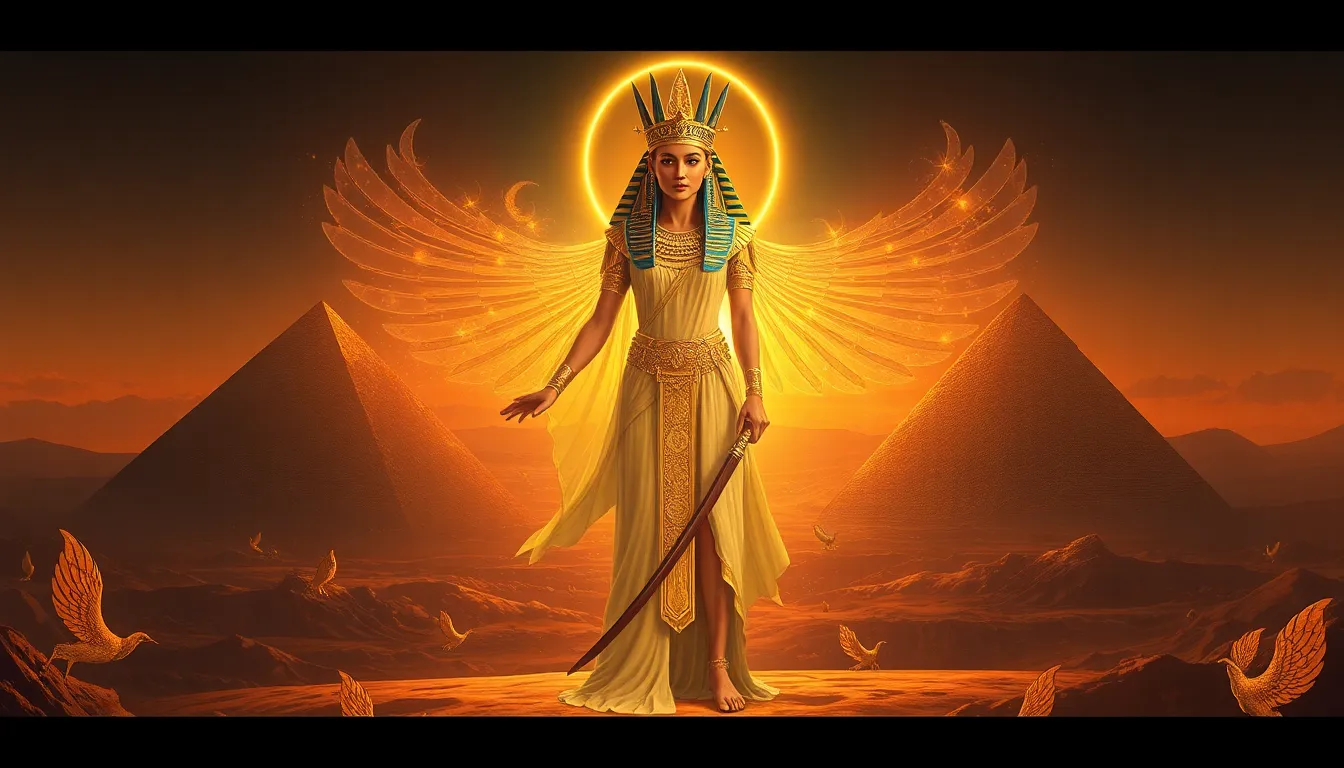The Myths of Isis: The Divine Mother and Protector
I. Introduction
Isis is one of the most significant figures in ancient Egyptian mythology, revered as a goddess of motherhood, magic, and fertility. With a rich tapestry of myths surrounding her, understanding the complexities of Isis’s character is essential in appreciating her role in ancient culture. This article aims to debunk common misconceptions about her and highlight her role as a divine mother and protector, delving into the various facets of her mythology.
II. The Origins of Isis: A Historical Perspective
Isis’s origins in Egyptian mythology can be traced back to the early dynastic period, where she emerged as a prominent deity. Her family lineage includes:
- Osiris – her brother and husband
- Horus – her son, the falcon-headed god
- Seth – her brother, associated with chaos and disorder
Over time, Isis’s worship evolved significantly. Initially a local deity, her influence expanded throughout Egypt and beyond, leading to her veneration across the Mediterranean. Temples dedicated to her were built in various locations, showcasing her importance in both religious and cultural practices.
III. Myth 1: Isis as Just a Fertility Goddess
One of the most common misconceptions about Isis is that she is solely a goddess of fertility. While she is indeed associated with motherhood and fertility, her roles extend far beyond this singular aspect. Isis embodies a multifaceted character, including:
- Motherhood: As the mother of Horus, she signifies the protective and nurturing aspects of motherhood.
- Magic: Isis is known as a powerful magician, using her skills to aid her loved ones and protect the innocent.
- Healing: She is often depicted as a healer, capable of curing ailments and providing comfort.
Many myths showcase her protective nature, such as the story where she protects her son Horus from Seth’s malevolence, highlighting her role as a divine guardian.
IV. Myth 2: Isis and the Osirian Myth Cycle
The Osiris myth is central to understanding Isis’s significance. In this narrative, she plays a crucial role in the resurrection of her husband Osiris after his murder by Seth. However, her actions are often misinterpreted:
- Isis’s determination to find Osiris’s body and resurrect him reflects her deep love and commitment.
- Her actions symbolize the power of love and loyalty, transcending death itself.
The implications of her actions extend to the concepts of resurrection and protection, as she not only revives Osiris but also ensures the safety of her son Horus, establishing a legacy of guardianship and love.
V. Myth 3: The Depiction of Isis in Art and Symbolism
Isis is commonly depicted in ancient art with specific symbols that convey her identity and protective nature. Some of the imagery associated with her includes:
- Throne: Often depicted with a throne on her head, symbolizing her status as a queen and protector.
- Cow horns and sun disk: These elements represent her nurturing aspects and connection to motherhood.
However, there are misunderstandings regarding these symbols. The throne, for instance, does not merely denote royalty; it signifies her role as a protector of the pharaoh and the nation. The cow horns symbolize her maternal instincts and her connection to the earth and fertility.
VI. The Global Influence of Isis Myths
Isis’s influence extended far beyond the borders of Egypt. As her worship spread, she became a vital figure in various cultures, including:
- Greco-Roman cultures, where she was associated with various goddesses, including Demeter and Aphrodite.
- Her attributes influenced the development of mystery religions, emphasizing themes of rebirth and protection.
Her lasting legacy can be seen in modern spiritual practices and feminist movements, where her image as a powerful mother figure continues to resonate.
VII. The Role of Isis in Contemporary Culture
In contemporary culture, Isis is often reinterpreted in various media and literature. Her myths are used to explore themes of:
- Motherhood: The complexities of being a mother and the challenges faced.
- Protection: The role of women as protectors in society.
The resurgence of interest in ancient goddesses has led to a reevaluation of their meanings and relevance today. Isis, as a symbol of empowerment and resilience, has found a place in discussions around feminism and spirituality.
VIII. Conclusion
In conclusion, debunking myths about Isis is crucial to understanding her true significance in ancient Egyptian mythology. As a divine mother and protector, she embodies resilience, love, and magic. Her enduring legacy continues to inspire and resonate in contemporary discussions about motherhood and femininity. Exploring the complexities of her mythology offers valuable insights into the past and its relevance in today’s world.




